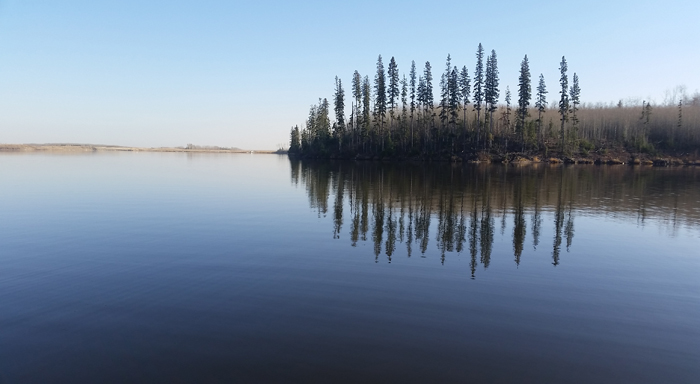
Conservation ecologist Mark Poesch and his team will assess fish habitat and determine fish species in Horizon Lake, a compensation lake created eight years ago beside the CNRL oilsands project.
Canada's first project to assess how well oilsands companies replace rivers or lakes after their mining activities wipe them out is under way, led by a team from the Faculty of ALES.
The five-year, $1 million project focuses on Horizon Lake, which is adjacent to Canadian Natural Resources Ltd.'s oilsands project in the Athabasca region, an hour north of Fort McMurray.
"Something people don't understand is that the oilsands companies need to put back the fish they destroy to the same if not better levels," said conservation ecologist Mark Poesch, of the University of Alberta's Department of Renewable Resources, who is leading the project that began in July 2015.
This "compensation" was made a legal requirement when the Fisheries Act was updated in 2012. However, the 60-hectare Horizon Lake, which replaced a river, was created eight years ago and is the first such compensation lake ever built in the oilsands region, making it an ideal candidate for evaluation.
"It allows us to create advice and develop lessons learned, as far as how to create compensation lakes," said Poesch.
Poesch, researcher Jonathan Ruppert and several students will assess fish habitat health using the latest technologies for fish monitoring: hyrdoacoustics and environmental DNA. The former is a sound wave that travels through water measuring the size of fish and fish populations, and the latter samples DNA that is shed by fish into the water.
"By sampling the DNA, we use next-generation sequencing technology to determine fish species present in the lake," said Poesch. It also eliminates the stress fish undergo when handled through repeated monitoring, he said, which can reduce their populations.
Primarily, his team will be looking at food-web dynamics (how energy is transferred through food chain systems) and how those compare to multiple other reference lakes in the same region.
However, they'll also study how the fish react to one another, and to benthic invertebrates (which lie on the bottom of the lake), to zooplankton (small animals and immature larger animals) and to phytoplankton (microscopic organisms such as bacteria and algae).
In addition, they will look at how fish interact with the lake to identify important habitat features such as woody debris and large cobble beds used for fish spawning, and see how they might be improved.
By establishing guidelines for sustainable artificial lakes, the project will help oilsands companies earn "the ecological and social license to operate," said Ken Minns, former head of Habitat Science at the Canadian Department of Fisheries and Oceans, in a press release.
Partners in the project include CNRL and Mitacs Coverage, a national, not-for-profit research funding organization that supports social and industrial innovation in Canada. The study's research collaborator is EcoVision, an Edmonton-based environmental consultancy.